Recent Water Damage Posts
Mold Growth after Water Damage: How to Prevent and Treat
2/7/2024 (Permalink)
Water damage is a common occurrence in homes with the potential for mold growth as a resulting issue. In this blog post, we will discuss the causes and dangers of mold growth after water damage, and effective prevention and treatment strategies to ensure healthy living standards.
Causes of Mold Growth after Water Damage
Mold spores are present everywhere in the environment, and when combined with the availability of moisture, they can begin to grow after water damage has occurred. The sources of water damage vary from natural disasters and plumbing issues to leaky roofs and windowsills.
Dangers of Mold Growth After Water Damage
Mold growth after water damage presents significant health risks to the occupants of the affected area. Mold spores can cause respiratory issues, allergies, and in some cases, infections. Mold also makes living spaces uncomfortable and can produce unpleasant odors.
Prevention of Mold Growth After Water Damage
Prevention of mold growth after water damage requires prompt and thorough water damage mitigation. Reducing humidity levels, fixing leaks, and using dehumidifiers make an environment unfavorable for mold growth. Routine home inspections are necessary to prevent the buildup of moisture and identify early signs of mold growth.
Treatment of Mold Growth After Water Damage
Treatment of mold growth after water damage requires a multi-step process that involves identifying the extent of the damage, eliminating the moisture source, removing the affected areas, and restoring the environment to healthy living standards. Professionals recommend the use of specialized equipment, such as negative air machines and dehumidifiers, to ensure thorough mold removal.
The Role of Professional Remediation Services
Professional remediation services are necessary for mold growth cases beyond your expertise. They offer the expertise of identifying mold types, the extent of the issue, and provide an appropriate remedial approach to ensure a healthy environment. In addition, they can assist with insurance claims and advocate for the best interests of clients when dealing with water damage and mold growth.
Mold growth after water damage is a serious issue that should be tackled immediately. Effective prevention strategies can stop mold growth before it starts, while prompt treatment with the assistance of professional remediation services ensures a healthy living space for occupants. Contact our SERVPRO of Montclair/ West Orange team for professional assessment and restoration services, ensuring a better, safer home for you and your loved ones!
Rebuilding Together: The Power of Community After Water-Related Disasters
10/21/2023 (Permalink)
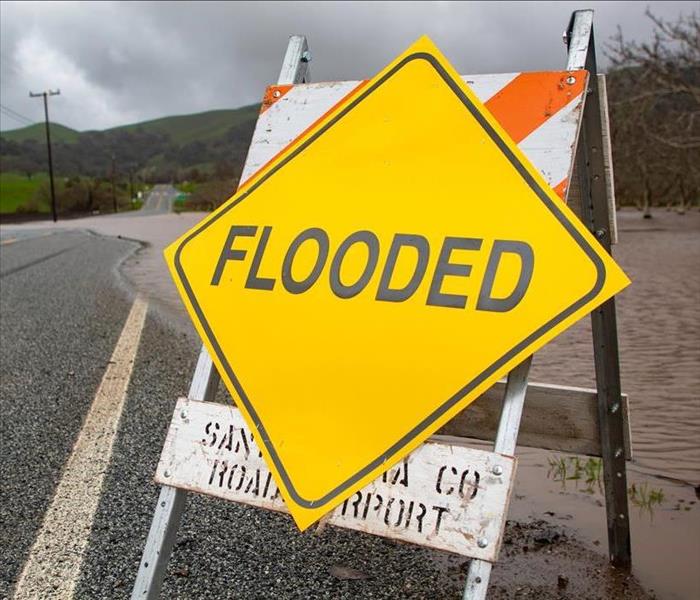 In times of crisis, the power of community resources and support is immeasurable.
In times of crisis, the power of community resources and support is immeasurable.
Water-related disasters, such as floods or severe storms, can leave communities devastated. The aftermath of such events can be overwhelming, both physically and emotionally. However, during these challenging times, communities often come together to provide support and resources to those affected. In this blog post, we will explore the importance of community resources and support after water-related disasters and highlight some key ways in which affected individuals can seek help.
Emergency Shelters
During and immediately after a water-related disaster, emergency shelters are often set up to provide temporary housing for those displaced from their homes. These shelters offer a safe and secure place to stay, with basic amenities, such as food, water, and medical assistance.
Various local and national disaster relief organizations step in to provide assistance after water-related disasters. These organizations offer resources such as food, clean water, clothing, and financial aid to those affected. They also provide counseling services and access to mental health professionals to help individuals cope with emotional trauma.
Volunteer Groups
Community members often form volunteer groups to help with cleanup and recovery efforts. These groups lend a hand in clearing debris, mucking out flooded homes, and assisting with repairs and rebuilding. Their efforts play a crucial role in supporting affected individuals and helping them restore their lives.
Donations and Fundraisers
Many individuals, businesses, and organizations rally together to organize donation drives and fundraisers. These initiatives collect essential items, such as clothing, bedding, toiletries, and household supplies, to distribute among those in need. Fundraisers help raise funds for long-term recovery and rebuilding efforts.
Local Government Assistance
Local governments typically mobilize resources to provide assistance to the community after water-related disasters. They may establish hotlines and information centers to help residents access necessary services. Governments also offer support programs, grants, or low-interest loans to aid in home repairs and recovery.
Insurance Claims and Legal Assistance
Dealing with insurance claims after a disaster can be complex and overwhelming. Community resources may include guidance on filing claims, connecting with insurance professionals or legal experts who can provide the necessary support, and ensuring individuals receive the coverage they are entitled to.
Education and Preparedness Programs
Communities often offer educational resources and preparedness programs to help residents better understand and prepare for future water-related disasters. These initiatives provide information on emergency preparedness kits, evacuation plans, and steps to safeguard homes and properties from future damage.
In times of crisis, the power of community resources and support is immeasurable. Coming together as a community not only helps in the immediate recovery but also instills a sense of hope, resilience, and unity. By accessing these resources and leaning on the support of others, individuals and communities can navigate the challenges of water-related disasters and rebuild their lives with strength and determination.
How to Prepare for an Insurance Adjuster's Visit After a Water Leak
7/18/2023 (Permalink)
Dealing with a water leak in your home can be a stressful experience. From the initial damage to the cleanup and restoration process, there are many steps involved in getting your property back to normal. One crucial step in this process is the visit from the insurance adjuster. Their role is to assess the damage and determine the coverage and compensation you're entitled to. To ensure a smooth and successful insurance claim, it's important to be prepared for the adjuster's visit. In this blog post, we'll provide you with essential tips on how to effectively prepare for the insurance adjuster's visit after a water leak.
Document the Damage
Before the adjuster arrives, document the water damage thoroughly. Take clear and detailed photos or videos of all affected areas, including damaged belongings, structural issues, and any visible signs of water intrusion. This evidence will serve as valuable documentation for your insurance claim.
Create an Inventory of Damaged Items
Make a detailed inventory of all damaged items caused by the water leak. Include information such as descriptions, quantities, ages, and estimated values. Having a comprehensive list will facilitate the claims process and ensure you receive appropriate compensation for your losses.
Gather Relevant Documentation
Collect all relevant documents related to your property and insurance policy. This includes your homeowner's insurance policy, previous claims, maintenance records, and any receipts or invoices for repairs or improvements. Having these documents readily available will assist the adjuster in assessing your claim accurately.
Be Present During the Inspection
When the adjuster arrives, make sure to be present during the inspection. Accompany them as they assess the damage and ask any questions you may have. Take notes and keep a record of the conversation for reference. By being present, you can provide additional information and ensure a thorough evaluation of the damage.
Provide a Detailed Account of the Incident
Be prepared to provide a detailed account of the water leak incident. Explain when and how the leak occurred, the steps you took to mitigate the damage, and any repairs or restoration work already completed. The adjuster will rely on this information to understand the cause and extent of the water damage.
Ask Questions and Seek Clarification
Don't hesitate to ask questions or seek clarification during the adjuster's visit. If there are aspects of the process or coverage that you don't understand, ask for clarification. Understanding the scope of your policy and the claim process will help you make informed decisions and ensure a fair settlement.
Maintain Detailed Records
Throughout the insurance claim process, maintain detailed records of all interactions, including phone calls, emails, and written correspondence. Note down the names, titles, and contact information of anyone you speak with regarding your claim. These records will be valuable if any issues arise or if further clarification is needed in the future.
Preparing for an insurance adjuster's visit after a water leak is crucial to ensure a smooth and successful claims process. By documenting the damage, creating an inventory, gathering relevant documents, being present during the inspection, providing a detailed account of the incident, asking questions, and maintaining detailed records, you'll be well-prepared to navigate the insurance claim process effectively. Remember, professional assistance from a reputable water damage restoration company can also help streamline the process and ensure your rights are protected.
At SERVPRO of Montclair/West Orange, we understand the complexities of dealing with water damage and insurance claims. Our team of experts is ready to assist you in the restoration process and provide guidance throughout the claims process. Contact us today to learn more about our comprehensive water damage restoration services and how we can support you during this challenging time.
How To File An Insurance Claim After Water Damage In 5 Easy Steps
3/18/2023 (Permalink)
 If your home or property suffers from a water loss, get the right help!
If your home or property suffers from a water loss, get the right help!
When a water damage event occurs in your home, it can be hard to know how to file an insurance claim, especially if you have never experienced a water loss before. Here are the steps you need to follow to make sure you're doing everything right.
Stop the water flow.
If your home has suffered from a water leak, the first thing you should do is stop the flow of water. To do this, locate the source of your leak or flood and turn off its main shut off valve. If there isn't one nearby--or if there is but it's inaccessible due to debris or other obstructions--shut down individual valves for individual rooms as well as any electrical outlets that may be affected.
Make a claim with your insurance company.
Next, it's time to call your insurance company and begin your claim. This is something that should be done as soon as possible. If you wait too long, they may not cover all of your losses or they may try to deny coverage.
Here's what you need:
- Personal information
- Your policy number
- Details about what happened
Take pictures of the damage.
Next, you need to take pictures of the damage as soon as possible. This will help your adjuster determine what needs to be replaced and how much it will cost to fix. You'll want to take pictures from different angles so they can see everything that was damaged, including any damage done to the structure itself, property, and contents.
Get your home inspected.
After calling your insurance company and filing a claim, it is important to get your home inspected by an adjuster. Usually, the insurance company will provide this service to you. The adjuster will look for evidence of water damage and document the extent of the damage. They will also inspect other structural elements like baseboards and trim boards as well as electrical outlets and switches to locate all the damage.
Call a water mitigation company.
You've probably heard the term "water mitigation" before, but you may not know exactly what it means. A water mitigation company is a professional who specializes in cleaning up water damage.
After calling your insurance company, you need to call one of these professionals as soon as possible. Your insurance company should be able to recommend several local companies that can do this work for you--or if they don't have any recommendations, you can look online for some yourself. This is an important step in order to prevent any secondary damage, such as a mold infestation due to water sitting unattended for an extended period.
Knowing how to file an insurance claim will help you get what you need from your insurance policy.
When you have water damage to your home or business, knowing how to file an insurance claim after water damage will help you get what you need from your insurance policy. The sooner you file a claim, the better. Take pictures of the damage and send them to your insurance company right away so they can start processing it.
If you have water damage, getting the right help can be very important. Our SERVPRO of Montclair/West Orange team is here to help with all your water damage cleanup and restoration needs. Our team will also assist you with the insurance claims process to ensure that you receive accurate compensation.
Common Causes for Basement Flooding
1/23/2023 (Permalink)
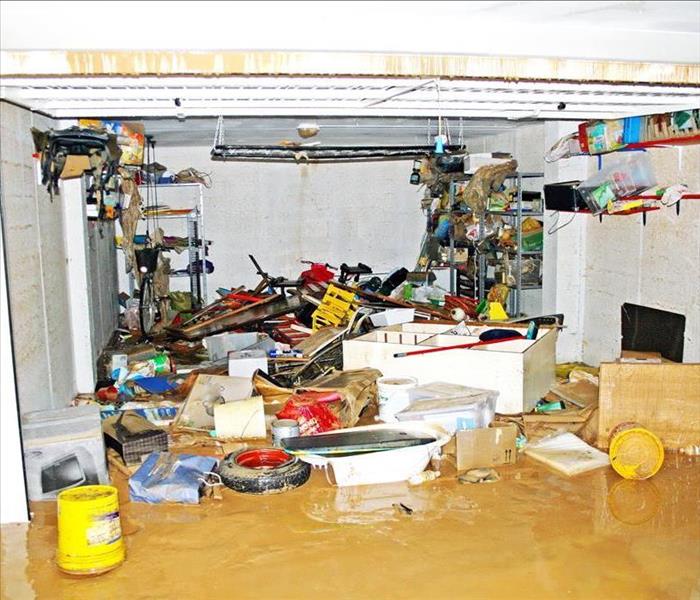 If you have a wet basement, the root cause may be one of several things.
If you have a wet basement, the root cause may be one of several things.
If you have a wet basement, the root cause may be one of several things. Before you buy new appliances or carpets, check out the possible causes of your basement flooding and learn how to fix them.
Faulty Sump Pumps
Foundations can be damaged by a variety of factors, such as erosion, shifting soil, and water damage. When a foundation is damaged, it may not be able to provide proper drainage for the home anymore. This will lead to water pooling in low-lying areas such as the basement or crawl space.
In addition to improper drainage systems, another common source of basement flooding is faulty sump pumps. A sump pump is a device that pumps water away from buildings through pipes leading to an area outside of your property. Sump pumps are used in basements or other low-lying areas where groundwater may accumulate
because they are often located below ground level with little natural drainage. They are also commonly used as part of a larger system designed for rainwater runoff removal from houses with flat roofs or when other sources of flooding occur within homes (e.g., broken-down appliances).
Foundation Leaks
One of the most common causes of basement flooding is foundation leaks. Foundation leaks can occur when there are cracks in your home's foundation, which means that water has access to your basement. This often results in wet carpeting, flooring, and wall insulation. You should look out for these signs:
- Watermarks on walls
- Water stains on ceilings
- Wet carpeting or flooring
A professional inspection will help determine if you need a repair or replacement of any damaged areas of your home's foundation. If you have a small crack that you're able to seal yourself, make sure to use materials specifically made for waterproofing purposes; otherwise, the problem could get worse over time as moisture gets inside through other openings (like windows).
Heavy Rain and Storms
Clogged runoff drains are one of the most common causes of basement flooding in homes across the country. To help prevent this, make sure your gutters are clear at all times! If they're not, water can back up into them during heavy rains causing damage to your foundation walls by seeping through cracks in the siding or through cracks in the foundation wall. If you don't know how often you should clean out these drain pipes then check with a professional before cleaning yourself out because sometimes rainwater can end up being too powerful for homeowners without proper training (or experience).
If you have a wet basement, it’s important to find the cause before it gets worse. Basement flooding can be caused by all sorts of things, from faulty sump pumps or foundation leaks to heavy rain or storms. If you suspect that your Montclair home is experiencing flooding due to one of these issues, contact a SERVPRO of Montclair/West Orange.
Signs You Need Water Damage Restoration Services
12/5/2022 (Permalink)
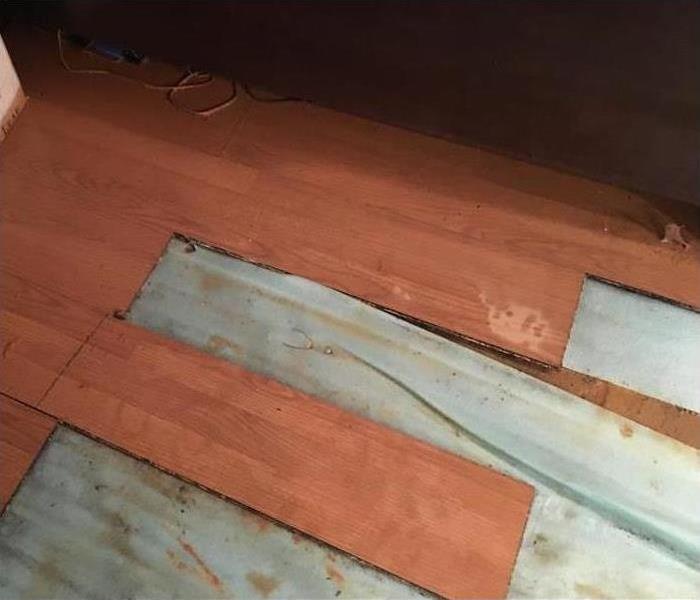 Removing flooring to remove moisture
Removing flooring to remove moisture
Signs That Water Damage Restoration Services Are Required
Water damage is a serious issue, and if you don't get it fixed as soon as possible, it could cause lasting damage to your Montclair, NJ home or business. Here are some signs that you need water damage restoration services:
Wet Spots on the Floor or Ceiling
Leaks are a common cause of water damage, so look for signs of them. If you have a leak, you may notice wet spots on the floor or ceiling. Check for watermarks on your ceiling and look for moisture under sinks and toilets. If you see any of these signs, it's time to call in an expert!
Significant Changes in Your Water Bill
If your water bill has increased, that can be a good sign that you have a leak. The increase will usually happen over time and not all at once. So if you notice an increase in your water usage and there are no changes to the number of people living in your home or anything like that, it could be because of a leak.
Test Your Carpets
Carpets can be a good place to start because they are the most susceptible to water damage. To test your carpets and floors, you can use a moisture meter. This little device measures the amount of moisture in the flooring material and will tell you if it is wet or if it has been damaged. If your carpet does not pass this test, get some help from an expert who can remove as much of the water as possible before it causes permanent damage to your home.
Listen and Watch the Dishwasher
If you hear the dishwasher running longer than usual, check it for leaks. Look at any water on the floor around your sink or underneath it and see if there are any leaks that are causing this.
If a leak is suspected, turn off the water supply under your sink immediately to keep from causing even more damage by flooding the area further.
Check Under Your Sinks
Many of us take daily showers and are accustomed to seeing some discoloration on our bathtub liner. However, if you notice any rust or mold under your sinks, it could be a sign that there is more water damage than meets the eye. It's important not to touch anything that might be contaminated because this can spread bacteria throughout the home.
Call the Professionals
It’s important to know that the faster you call SERVPRO of Montclair/ West Orange to investigate, the faster we can get you back on track. We will help assess the damage and make recommendations for cleanup and restoration services to begin as soon as possible.
In short, water damage can be a disaster if left to go unchecked. If you have any of the signs above, call SERVPRO of Montclair/ West Orange immediately to investigate and get the problem taken care of before it becomes worse. Our trained professionals will help you assess the damage, formulate a plan for restoration, and get it done quickly!
Is It Necessary To Replace My Carpet?
11/8/2022 (Permalink)
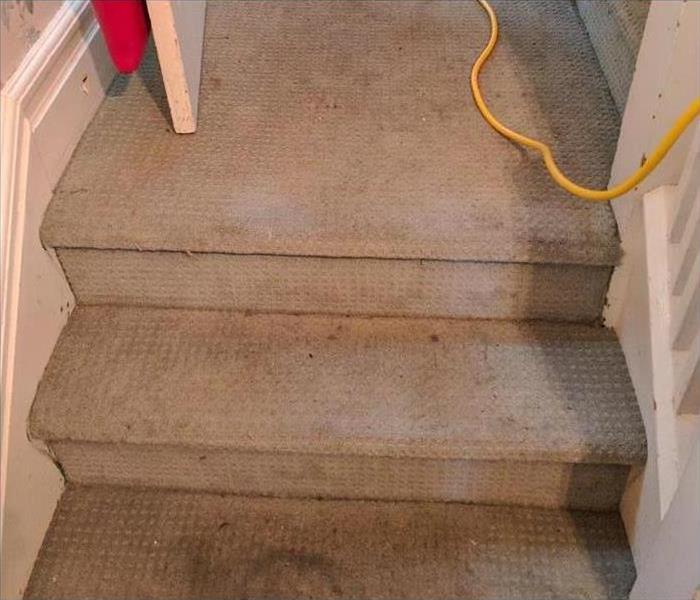 Carpet water damage
Carpet water damage
Do I Need to Replace My Water-Damaged Carpet?
If you’re like most people, you have dealt with flooding in some capacity before. You might’ve had to deal with it in your own Montclair, NJ home. If so, you might have asked yourself whether or not it's necessary to replace your carpet if it gets wet.
We get this question all the time at SERVPRO of Montclair/West Orange. In most cases, though, replacing your carpet is not necessary if your water was clean—that is, it hasn't been contaminated by sewage or chemicals or other contaminants that could damage it over time. The first step in determining whether or not replacing your carpet is necessary depends on how much water was involved and how long it stood there before being cleaned up or dried out completely.
Act Quickly
It is important to act quickly and get the standing water cleaned up. Once you've removed as much water as possible, it is time to prevent mold growth on your carpet. The first step for preventing mold growth is to use a wet vac or towel to extract any remaining water from your carpet. If you don't have a wet vac available, make sure that the room where you are cleaning has good ventilation so that any moisture in the air can evaporate quickly enough before releasing its moisture onto your carpet fibers.
Once all of the standing liquid has been extracted from your carpet, use an anti-fungal agent to cleanse and sanitize both sides of each fiber in order to kill off any potential microscopic organisms living there.
Extract Water
You will want to extract as much water as possible as well. If you have access to a professional steam cleaner, this is definitely your best option. But if you don't have that luxury, you can use a wet vac or shop vac, carpet cleaner and/or even professional services such as SERVPRO of Montclair/ West Orange.
If the liquid that made your carpet wet was dirty or harmful in any way—for example, an overflowing sewer system—you should replace it since these contaminants will cause permanent damage if they are not removed properly. Your best bet is to call the experts at SERVPRO.
If your carpet is wet, you do not need to replace it as long as the water was clean. The key to this is acting quickly! If you are able to extract all of the standing water and get rid of any debris that may have gotten into the fibers, your carpet should be fine. It might take some time for the carpet to dry out completely, but once it does, you will be left with a soft and fluffy surface!
4 Tools That Can Help You Clear Your Clogged Drains
7/1/2022 (Permalink)
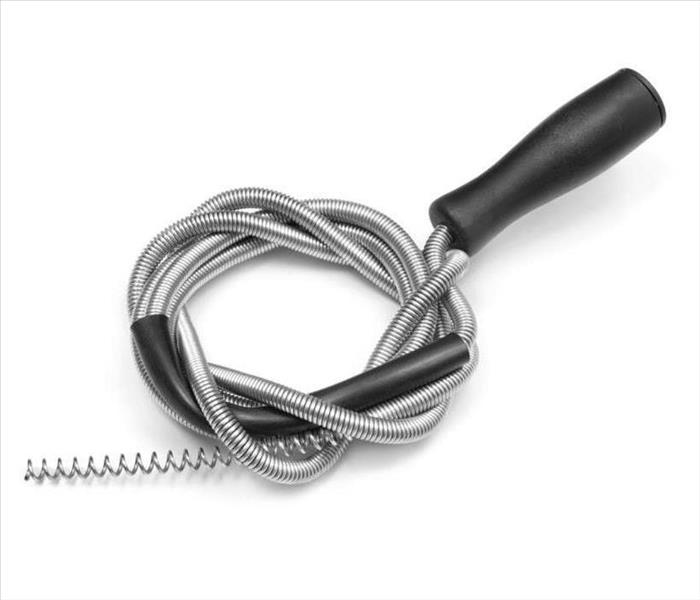 Clogs can happen in any pipe. When this happens, you must act quickly to avoid a pipe break, which will necessitate hiring a water restoration company
Clogs can happen in any pipe. When this happens, you must act quickly to avoid a pipe break, which will necessitate hiring a water restoration company
4 Tools That Can Assist You In Unclogging Clogged Drains
Any pipe can become clogged. When this happens, you need to act fast to avoid a pipe break that will require you to hire a water restoration company. Your first option is going to be to hire a plumber. However, this can be costly and inconvenient. Fortunately, there are a few DIY options when it comes to dislodging clogs. You will need to get the right tool for the job.
1. Plunger
The first tool most DIYers reach for to remedy clogged pipes is a plunger. These will remove clogs found in sinks, tubs, toilets, and more. You probably already have one of these in your home for emergencies.
2. Cable Auger
If you can't clear your clogged pipe with a plunger, the debris is probably a good distance into the pipe, and you will need to invest in a cable auger, also known as a drain snake. Any hardware store in West Orange, NJ, should have a range of snake options from 25 feet to 100 feet long.
3. Closet Auger
A closet auger is a snake that is specifically made for toilets. It will still come with a crank to help you work the tip down the toilet, but the cable will be housed in a shaft rather than a coiled spool. Also, the manufacturer will shape the tip so you can easily work it through the kinks in your toilet.
4. Electric Auger
Cloggs that are really far in your pipe or ultra-stubborn, you may want an electric auger. This machine will cut through any clog, even tough tree roots. Before using this, make sure you understand how to extend the cable and reel it back in safely.
Whether you can clear your stopped drain with a plunger or need the power of an electric auger, this DIY task is a great one to know. It can save you the time and money it would take to hire a plumber and help you keep your pipes clear.
When Flushing Your Toilet Leaves Water on the Floor
4/26/2022 (Permalink)
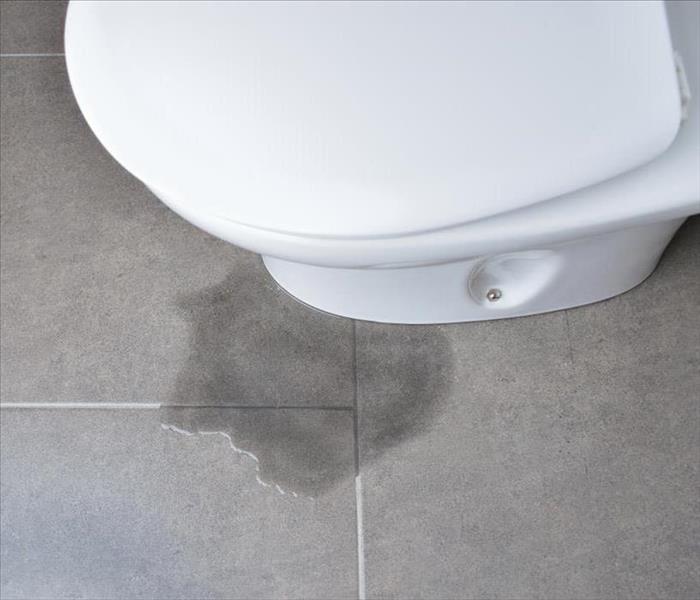 Contact SERVPRO to determine the cause of your toilet leak, make any necessary repairs, and help prevent further problems.
Contact SERVPRO to determine the cause of your toilet leak, make any necessary repairs, and help prevent further problems.
When Flushing The Toilet, Water Remains On The Floor
No one wants to flush the toilet, only to find water leaking out onto the floor around it. In most cases, however, a leaking toilet isn't cause for alarm and is usually an easy fix. All you need to do is figure out what's causing it and take steps to remedy the problem. Here's what to look for:
Take a Look at the Wax Seal
At the base of the toilet is a wax gasket that creates a seal between the toilet and the floor. Normally, when the seal is tight, the water flows straight down into the pipe when you flush. However, if the wax dries out and becomes brittle, it can develop cracks or pull away from one or both surfaces, allowing water to escape out from under the toilet base. If that's the case, it's as simple as replacing the old gasket with a new one.
Make Sure the Tank is Tight
If the toilet tank isn't on there tight, water can escape from the juncture where the tank meets the bowl of the leaking toilet. Try wiggling it — the tank shouldn't move. If it does, it needs to be tightened. Turn off the water supply and empty the tank as much as possible. Then, tighten the bolts inside to secure the tank firmly to the bowl.
Check the Tank Flange
The flange is the mechanism inside the tank that allows the water to fill and empty into the toilet. If the arm piece is broken, you can use a repair strap to fix it, or, in the worst-case scenario, replace the mechanism altogether. It should go without saying, but don't do anything to address your bathroom leak without shutting off the water supply first. If the steps outlined above aren't causing your leaking toilet, it's a good idea to call in professionals to fix the problem.
Contact a plumber or a water damage specialist in Upper Montclair, NJ, to determine the cause, make the repairs necessary and help you prevent any further issues.
3 Common Commercial Irrigation System Problems and Solutions
3/23/2022 (Permalink)
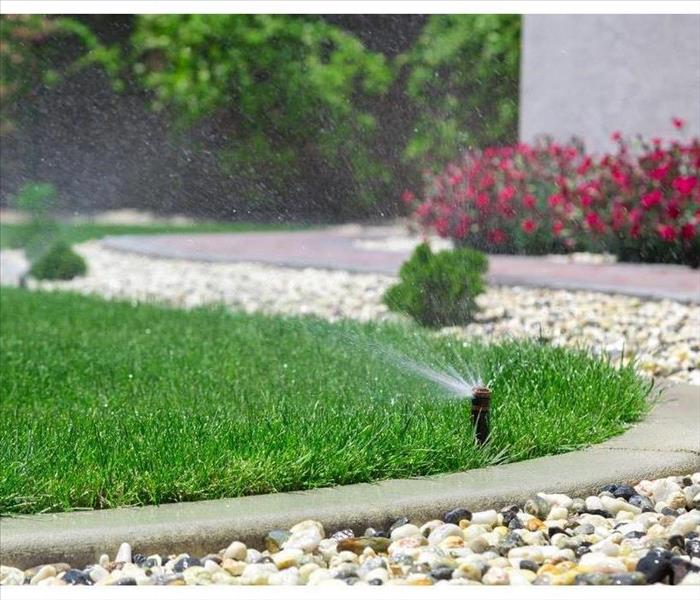 Troubleshooting an irrigation system is simple if you have some knowledge and the assurance that a professional is nearby if any water damage occurs
Troubleshooting an irrigation system is simple if you have some knowledge and the assurance that a professional is nearby if any water damage occurs
3 Issues with Commercial Irrigation Systems And Their Solutions
Has your building in West Orange, NJ, been experiencing troubles with the irrigation system? This is a frustrating experience, but there are a few common problems that comprise the majority of troubles. Luckily, these issues are solved with relative ease.
1. Low Flow in Big Areas
If your heads are barely spraying water, it is likely that you have a pressure issue. There are a few causes of this problem. First, your backflow device may be malfunctioning. Check to be sure the valves are completely open. Another more serious issue is a possible water leak somewhere along the lines. This is a huge hassle because it also leads to flooding and water damage to your property. If water damage is an issue, it's best to call in a water damage restoration specialist.
2. Individual Sprinkler Issues
If individual heads in your irrigation system are not activating, it's most likely an issue with the single sprinkler itself. This means no widespread irrigation problems, and it's usually an easy fix. Inspect the head to see if it is damaged or clogged with mud or other debris. If this is a reoccurring problem, consider lowering your heads a bit further into the ground to protect them from law care crews or foottraffic.
3. Large Areas Not Turning On
If large swaths of sprinklers aren't turning on, the culprit is probably electrical in nature. The controller needs to be inspected and checked for any obvious frayed wires, and you should also use a multimeter to check that the correct amount of voltage is flowing. Normal voltage is about 24 to 28 Volts. Sometimes only a single part needs replacing, but other times a full controller replacement is necessary. It's best to consult a technician to know for sure.
While an irrigation system may seem complicated, there are only a few issues that affect most properties.
3 Safety Measures To Employ When Replacing a Toilet
2/8/2022 (Permalink)
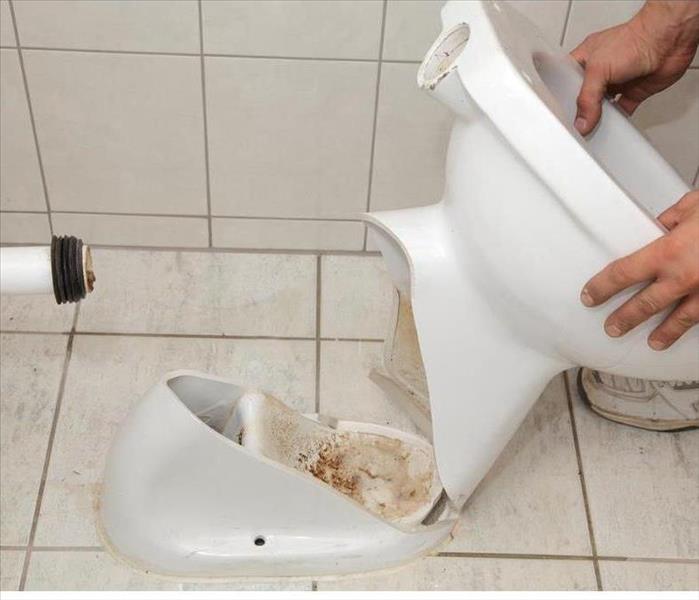 Wear gloves and protective glasses and have a bucket within arm’s reach to prevent water spills during the toilet repair.
Wear gloves and protective glasses and have a bucket within arm’s reach to prevent water spills during the toilet repair.
When Replacing A Toilet, Take These Three Precautions.
When a toilet malfunctions in your Montclair NJ, home, you will probably want to take steps to fix it right away. A leaking toilet may be especially problematic because it can damage your floors and create the perfect environment for mold growth. If you need to replace your toilet, there are a few safety measures you can put in place for each step to keep yourself and your family safe.
1. Prepare the Area
Before you remove the toilet, preparing the area can prevent accidents before they start. Keep young children and curious pets away from the bathroom and have newspapers or a tarp handy to rest the toilet on once you remove it. Wear gloves and protective glasses and have a bucket within arm’s reach to prevent water spills during the toilet repair.
2. Inventory Your Tools
Removing your old toilet requires a few tools, including a scraper, wrench, pliers and a measuring tape. Collect all these tools ahead of time so you will not have to search for them during the repair process. When you use your wrench to loosen the bolts that hold the toilet to the floor, be sure no tools are scattered around before you attempt to lift the toilet and check the wax seal and flange, as stumbling during this phase could cause serious injury.
3. Avoid Touching Contaminated Water
A leaking toilet may cause contaminated water to puddle around the base or run across your bathroom floor if it should spill from the bowl or if it has previously overflowed. If this occurs, call a flood cleanup and restoration company to inspect and sanitize your bathroom to prevent damage to your floors and walls and to check for the presence of mold before you install the new toilet.
Replacing a leaking toilet at your Montclair NJ, home does not have to be difficult when you take the time to work safely. Making the right preparations, reading through directions before you begin and taking one step at a time can help keep this a safe and painless process.






 24/7 Emergency Service
24/7 Emergency Service








